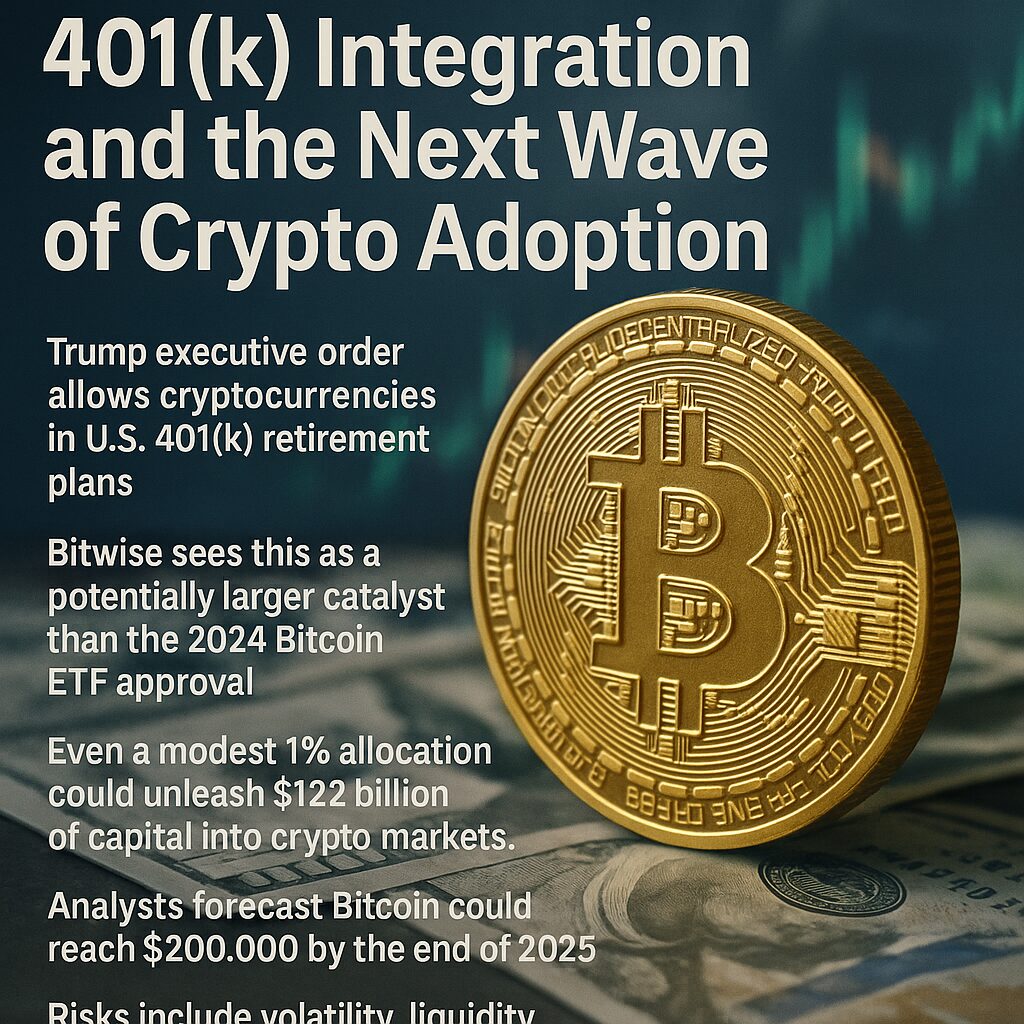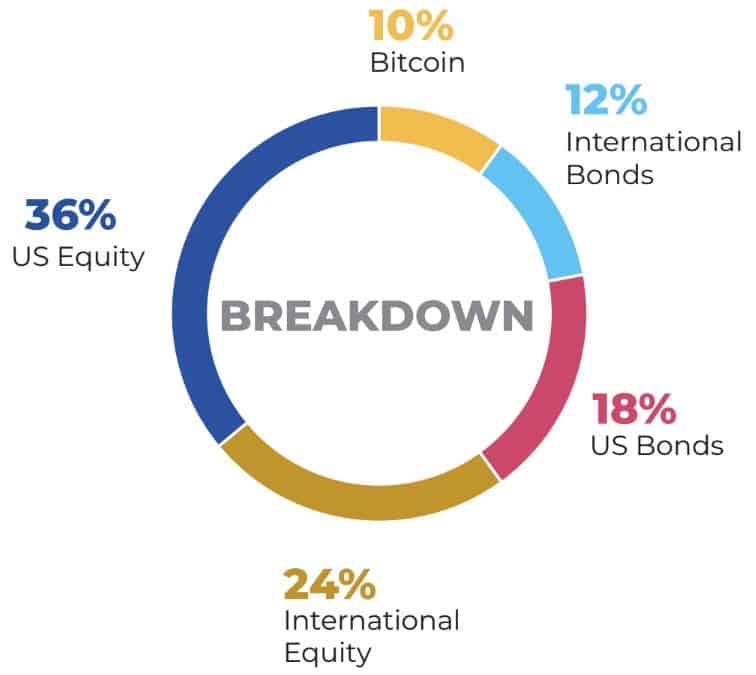
Main Points :
- Trump executive order allows cryptocurrencies in U.S. 401(k) retirement plans.
- Bitwise sees this as a potentially larger catalyst than the 2024 Bitcoin ETF approval.
- Even a modest 1% allocation could unleash $122 billion of capital into crypto markets.
- Analysts forecast Bitcoin could reach $200,000 by the end of 2025.
- Risks include volatility, liquidity constraints, higher fees, and complexities.
- Institutional adoption and Fed rate cut expectations further support bullish momentum.
1. Executive Order Unlocks Crypto in 401(k) Plans
President Trump signed an executive order on August 7, 2025, directing federal agencies to expand the types of assets allowable in 401(k) retirement plans to include cryptocurrencies along with private equity and real estate. Regulatory updates are pending, meaning this policy won’t take effect immediately, but it could redefine the boundaries of retirement investing in the U.S.
2. Why It’s Bigger than Bitcoin ETFs
André Dragosch, head of European research at Bitwise, regards this development as potentially more impactful than the 2024 approval of U.S. spot Bitcoin ETFs. With the U.S. 401(k) market valued at $12.2 trillion, just a 1% allocation to crypto could equate to $122 billion in new capital flows. Surveys among financial advisors indicate many recommend 2.5–3% Bitcoin allocation, pointing towards even larger inflows.
3. Price Forecast: Aiming for $200,000
Bitwise maintains its $200,000 Bitcoin price prediction for the end of 2025, citing this retirement fund momentum as a major tailwind. Additionally, expectations of Federal Reserve interest rate cuts—supported by an 83% odds of a 25-basis-point reduction at the September FOMC meeting—add further bullish energy to the narrative.
4. Market Reaction: Bitcoin on a Record-Breaking Rally
Following the executive order and dovish monetary policy signals, Bitcoin surged to fresh all-time highs—reaching $124,000+ in mid‑August 2025. This rally, roughly a 33% gain year-to-date, is fueled by institutional adoption, regulatory easing, ETF inflows, and speculated tailwinds from the upcoming Bitcoin halving.
5. Risks: Volatility, Fees, and Complexity
Despite the excitement, financial experts caution against the added dangers of these new asset classes. Critics highlight concerns around:
- High volatility and lack of stability inherent in cryptocurrencies.
- Higher fees associated with private market investments.
- Limited liquidity and transparency in private equity and crypto.
- Fiduciary risks and legal exposure for plan administrators and everyday workers.
- Potential misalignment with ERISA standards for fiduciaries.
6. Broader Crypto Momentum and Institutional Integration
These developments are part of a wider pro-crypto regulatory alignment in the new Trump administration. In early 2025, Trump established a Strategic Bitcoin Reserve and a broader Digital Asset Stockpile, formally recognizing cryptocurrencies as governmental reserve assets. Additionally, regulatory enforcement against firms like Coinbase has eased, contributing to a friendlier environment for digital assets. Academic research shows growing correlation between Bitcoin and traditional equity indices—indicating deeper integration into global financial markets.

Conclusion
The inclusion of cryptocurrencies in U.S. 401(k) retirement plans marks a historic shift toward crypto mainstream adoption. With even minimal capital allocations potentially injecting hundreds of billions of dollars, this policy could be the tipping point that drives Bitcoin to $200,000 by year-end. However, the promise comes with significant risk: volatility, regulatory complexity, and potential fiduciary challenges remain critical concerns. For professionals exploring new digital-asset-based revenue streams or institutional blockchain applications, this turning point underscores the urgent need for robust infrastructure, comprehensive investor education, and regulatory clarity.

